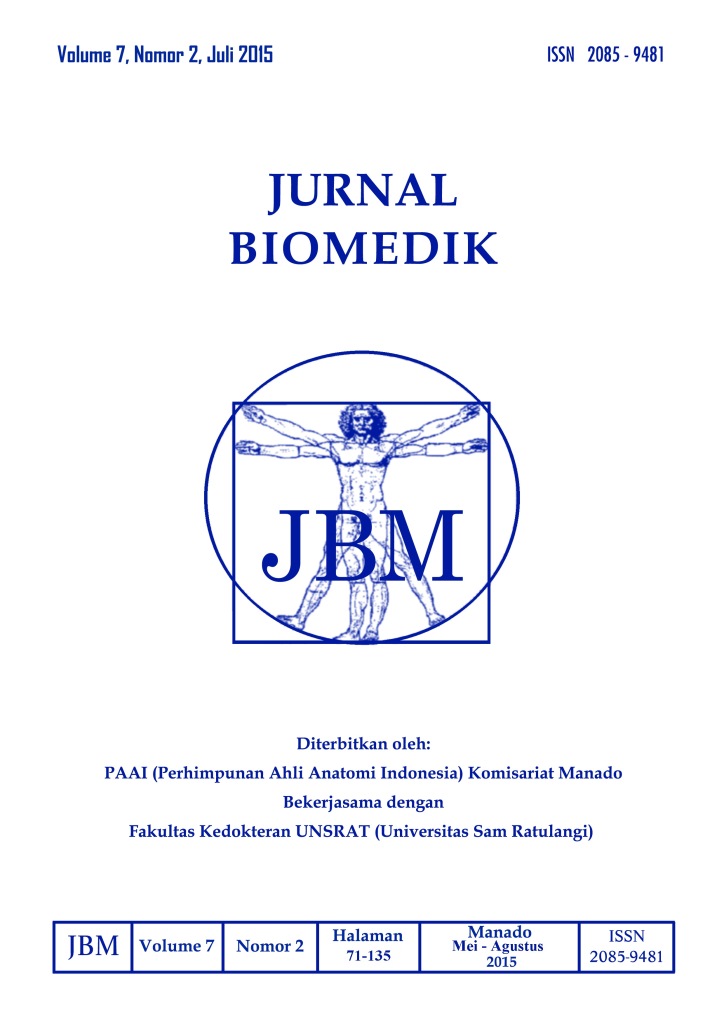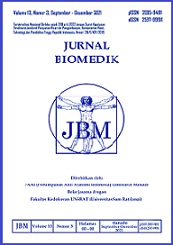MENINGKATKAN KOLESTEROL HDL Paradigma baru dalam pencegahan penyakit kardiovaskular
DOI:
https://doi.org/10.35790/jbm.7.2.2015.9324Abstract
Abstract: Studies of statin have proven that lower LDL-cholesterol levels will reduce morbidity and mortality of coronary heart diseases with succesfull rate only about 20-30%; therefore, it needs another attempt to decrease these morbidity and mortality rate. The other important risk factor is HDL-cholesterol which protects against atherosclerotic events. Several studies have shown that there is a close relationship between low levels of HDL-cholesterol and the increased incidence of cardiovascular diseases. The inverse relationship between HDL cholesterol and cardiovascular disease prevention applies to both males and females, as well as morbidity and mortality. The increase of HDL-cholesterol levels about 1 mg/dl can reduce the risk of coronary heart disease 2% in males and 3% in females. It needs to know the goal of patient treatment to achieve the higher HDL-cholesterol level. There are 4 groups of patients with low level of HDL-cholesterol, as follows: type 2 diabetes mellitus, metabolic syndrome/central obesity, elderly, and post-myocardial infarction. The management of patients with low level of HDL-cholesterol consists of non-pharmacological therapy such as diet, exercise, stop smoking, and alcohol restriction as well as pharmacological therapy by using drugs to increase the HDL-cholesterol levels such as fibrates and nicotinic acid. These drugs can be combined with others such as the statins.
Keywords: HDL-Cholesterol, cardiovascular disease, management
Abstrak: Penelitian golongan statin membuktikan bahwa penurunan kadar kolesterol-LDL akan menurunkan angka kesakitan dan kematian akibat penyakit jantung koroner dengan angka keberhasilan hanya sebesar 20-30%, sehingga harus ada upaya lain dalam menurunkan angka kesakitan maupun kematian penyakit kardiovaskuler. Komponen lain yang penting yaitu kolesterol-HDL yang bersifat protektif terhadap kejadian aterosklerosis. Beberapa penelitian membuktikan bahwa terdapat hubungan erat antara rendahnya kadar kolesterol-HDL dengan meningkatnya kejadian penyakit kardiovaskular. Hubungan terbalik antara kolesterol-HDL tinggi dan pencegahan penyakit kardiovaskular berlaku baik bagi pria maupun wanita, serta morbiditas maupun mortalitas. Setiap kenaikan kadar kolesterol-HDL plasma sebesar 1 mg/dl dapat mengurangi risiko penyakit jantung koroner sebesar 2% pada pria dan 3% pada wanita. Untuk meningkatkan kadar kolesterol-HDL, perlu diketahui target pasien yang menjadi sasaran pengobatan. Terdapat 4 kelompok pasien yang memiliki kadar kolesterol-HDL rendah, yaitu: pasien dengan diabetes melitus tipe 2, sindroma metabolik/obesitas sentral, usia lanjut, dan pasca infark miokard. Penatalaksanaan pasien dengan kadar kolesterol-HDL rendah terdiri dari terapi non-farmakologis antara lain: diet, olahraga, berhenti merokok, dan restriksi konsumsi alkohol) serta penggunaan obat untuk meningkatkan kadar kolesterol-HDL, diantaranya ialah golongan fibrat dan asam nikotinik. Obat-obat ini dapat dikombinasikan dengan obat lain seperti golongan statin.
Kata kunci: kolesterol-HDL, penyakit kardiovaskular, penatalaksanaan
Downloads
Issue
Section
License
Penyunting menerima sumbangan tulisan yang BELUM PERNAH diterbitkan dalam media lain. Naskah yang masuk dievaluasi dan disunting keseragaman format istilah dan cara penulisan sesuai dengan format penulisan yang terlampir dalam jurnal ini.
Segala isi dan permasalahan mengenai tulisan yang yang diterbitkan dalam jurnal menjadi tanggung jawab penuh dari penulis.







